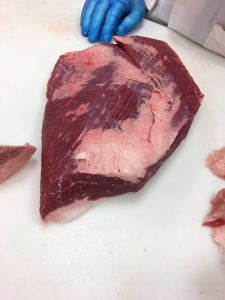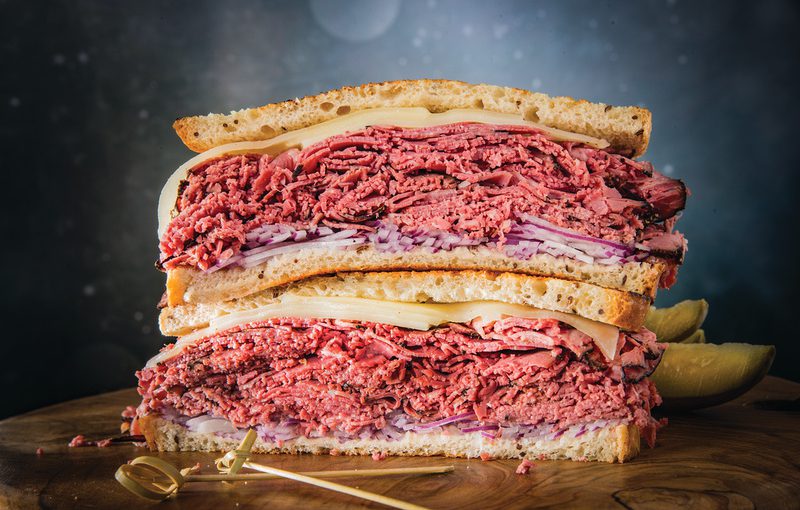Lots of folks love corned beef (and/or pastrami) … but few have ever had the satisfaction of making it from scratch. We’re talking brining, baby — the magnificent process of giving beautifully marbled beef a long, relaxing soak in a tub of salty, seasoned goodness before cooking.
Brisket is, of course, the traditional choice for brining, though other cuts that perform best with low and slow, gentle cooking can be good candidates, too. Start by separating a whole brisket — which boasts lots of flavorful marbling high in nutritious and delicious oleic acid — along the seam, into the point and the flat.
 The point is especially full of intramuscular marbling, while the flat is leaner and a bit easier to slice. But no matter which piece you choose — or maybe you decide to make both — a seriously good meal is … well, about a week away.
The point is especially full of intramuscular marbling, while the flat is leaner and a bit easier to slice. But no matter which piece you choose — or maybe you decide to make both — a seriously good meal is … well, about a week away.
Yes, brining requires patience, but we all know deep down that the best things come to those who wait. For best results, brining is a process not to be rushed. As for the brine itself, it’s part science and part art.
 A proper brine requires water, salt and sugar, and also a specific measure of Instacure #1 (aka Prague powder or sodium nitrite).
A proper brine requires water, salt and sugar, and also a specific measure of Instacure #1 (aka Prague powder or sodium nitrite).
The brine is also home to seasonings and spices, like the traditional bay leaves, coriander and mustard seeds, cinnamon, allspice and peppercorns.
Once the brisket’s soak in the tub is over, it’s decision time: corned beef or pastrami?
Both are brined before cooking, but most often, the flat is used for corned beef and boiled or braised, while the point can be rubbed generously with cracked black pepper before being smoked and brought to the table as pastrami.
For brining and pastrami creation in full color, step into the Certified Angus Beef ® brand Meat Lab with Chef Michael Ollier and Meat Scientist Diana Clark in this Live video. And be sure to save this Made-from-Scratch Pastrami Brisket recipe.



